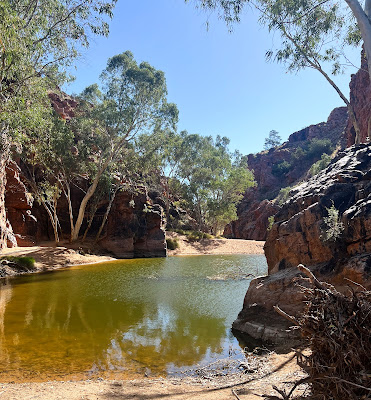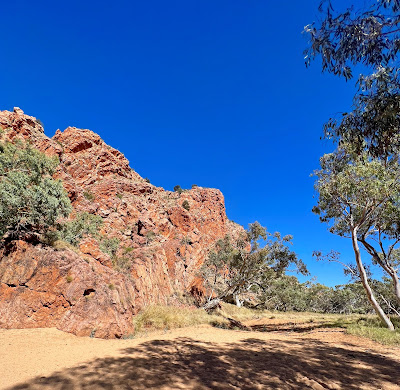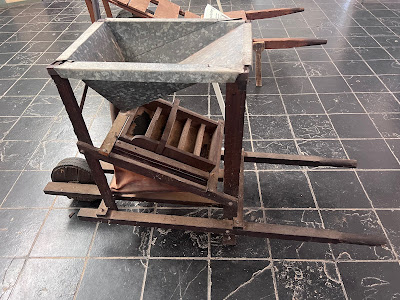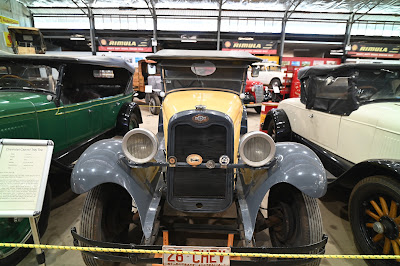There was no frantic rush to leave our campsite at the National Road Transport Museum as our drive today was relatively short, with just three stops along the way before reaching our camp for the next three days.
We've visited Alice Springs many times, but for some reason, we've always explored parts of the West MacDonnell Ranges or Chambers Pillar, located southeast of Alice Springs in the desert, so the East Macs will be a completely new experience for us.
The Ross Highway is sealed for eighty-three kilometres to the Ross River Resort, with all other roads unsealed. Our first stop was only fifteen kilometres east at Emily Gap, but unfortunately, despite the water looking quite inviting, we couldn't go further to see the rest of the gap.
We explored Corroboree Rock and walked the circuit trail surrounding this formation, estimated to be over eight hundred million years old.
All sites in National Park and Reserve areas must be booked online before arrival. We reserved site 5 at Trephina Gorge in the Panorama Campground after reading reports on WikiCamps.
After completing the two-kilometre Gorge walk, which takes you along the top of the gorge, we returned to our campsite, walking through the sand of Trephina Gorge and then finishing the two-kilometre Panorama walk.
We also drove a short distance to see the ghost gum, which is over 33 metres tall and believed to be more than 300 years old. It is recognised as the most significant ghost gum in Australia by the National Register of Big Trees.
The following day, we drove to John Hayes Rockhole. The four-kilometre access road into the gorge took us thirty minutes each way, and sadly, it was almost impossible to prevent the sides of our Chev from being scratched. Looking back, we shouldn't have taken this track, as it was impossible to turn around until we reached the car park at the end.
We then moved to the Ross River Resort for the next two days, and at thirty-five dollars for an unpowered site, it was steep. However, Ros was able to use their water and our washing machine to catch up on six loads of laundry, so the price didn't seem so bad after all.
We headed to the Arltunga Historical Reserve on our second day. We started by setting our usual tyre pressures, which are sixty psi. However, after several kilometres, I reduced them to forty psi for a smoother ride on the rocky and corrugated road.
The Arltunga gold fields were the first significant settlement in Central Australia during the 1880s. Many miners pushed wheelbarrows from the railhead at Oodnadatta with all their belongings, covering roughly four hundred and sixty kilometres in a straight line. You could add a substantial extra distance to that figure.
Walks at the reserve take you through many of the buildings that have been restored to preserve them as much as possible.





















.jpg)
.jpg)





























